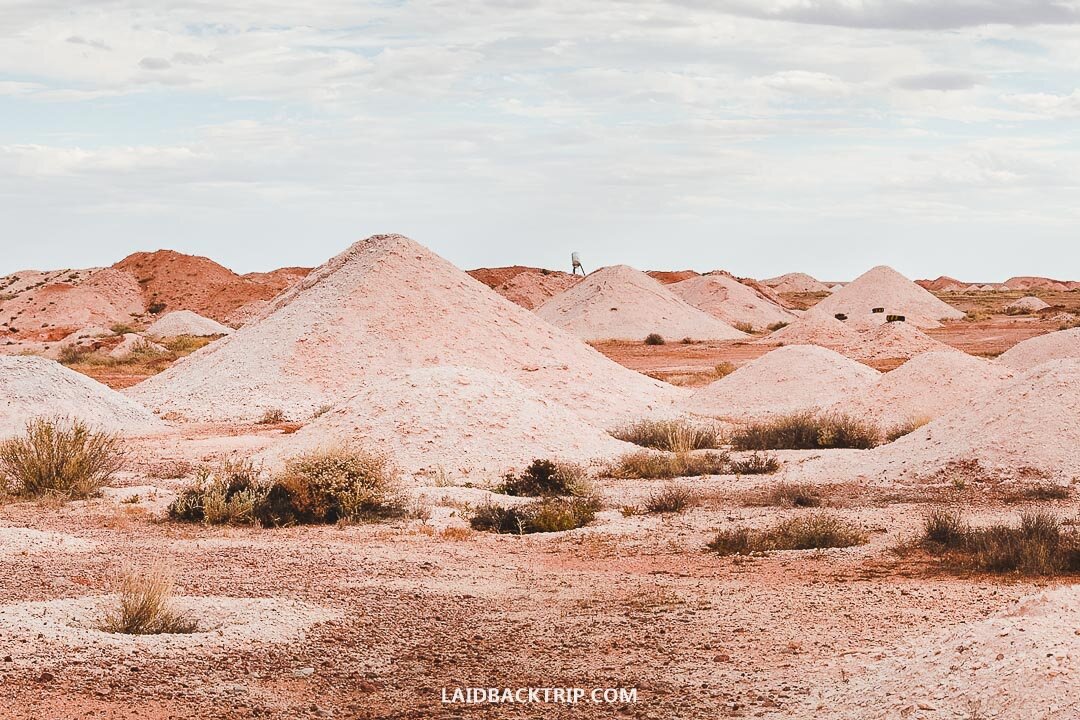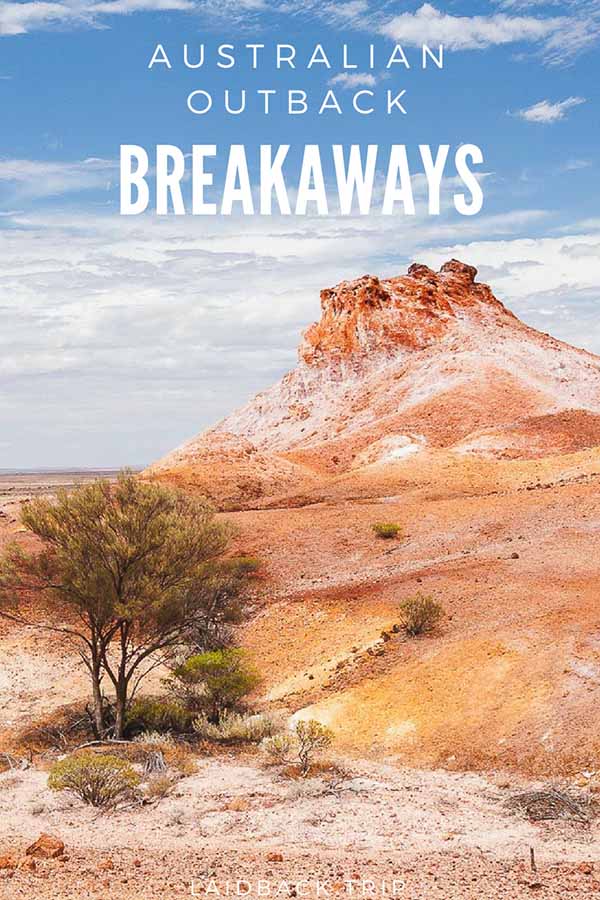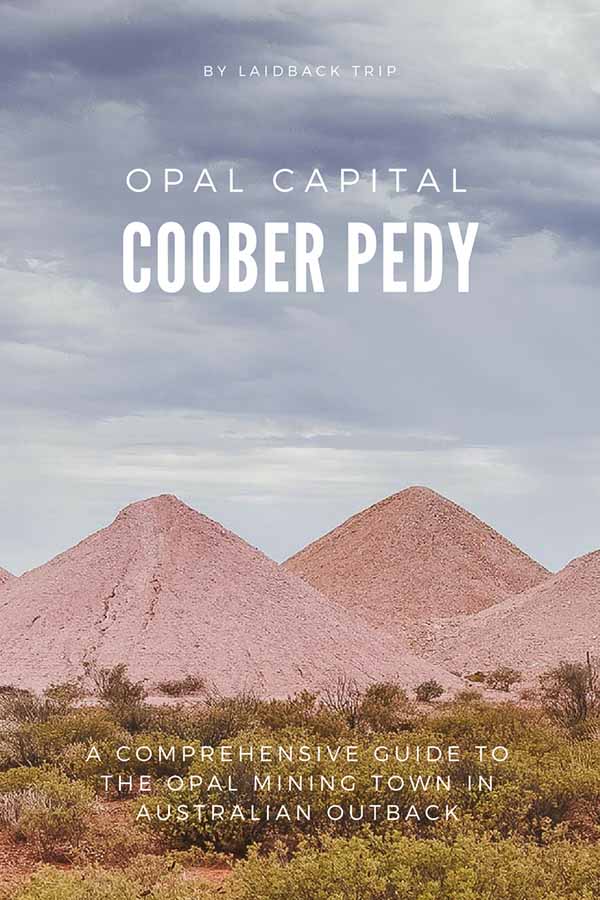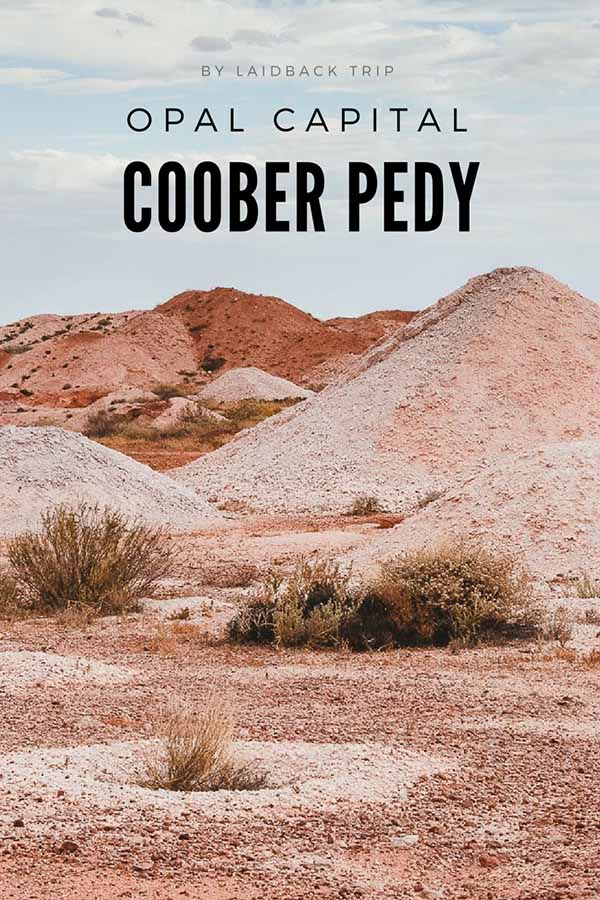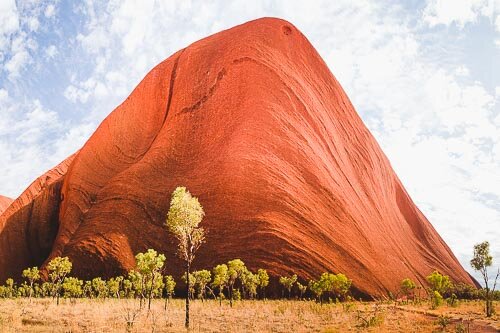Coober Pedy: A Guide to the Opal Capital in Australia
Discover the real Australian Outback in Coober Pedy and road-trip to Opal Capital of the World partially built underground. Our travel guide covers top things to do, tips on the best underground hotels, and how to get there. Visit Old Timers Mine and underground museum, Sebastian Orthodox Church, scenic lookout, Kanku-Breakaways Conservation Park, and Lake Hart.
When you look on the map, the small town of Coober Pedy lies literally in the middle of nowhere.
The town in Australian Outback is partially built underground and is known as Opal Capital of the World. It is also a traditional stop for road trippers on the way to Uluru and Red Center overall.
COOBER PEDY - THE QUIRKY TOWN IN AUSTRALIAN OUTBACK
There is something a bit unreal about Coober Pedy.
The town has its unmistakable atmosphere which is hard to define, and the only way how to get the sense of the place is to visit it as no picture will do the job. Quirky, haunted, bizarre but in a positive way. This place is full of abandoned and rusting strange things you would never expect to see in the inhabited area.
The ground is red-hot, and the scorching air mixed with the dust is hard to breathe.
What a difference from the Great Ocean Road we had visited only a few days ago.
The outback position and permanent inhabitants who decided to live mostly in houses they built underground and who devoted their lives to opal mining make Coober Pedy outstanding and incomparable with any other towns we've visited before.
A feeling of the remoteness was even more intense when we realized the fact that the closest bigger cities are Adelaide to the south (876 km) or Alice Springs to the north (689 km).
COOBER PEDY - THE OPAL CAPITAL
The town is located right on the Stuart Highway and it is impossible to miss when on the way to Red Center's highlight, Uluru and Kata Tjuta National Park.
The old Opal Noodling Blower Truck on a pedestal announces you reached the destination.
As this part of Australia has a desert climate, there was no permanent settlement until 1915 when the first opal was accidentally found by people searching for gold.
Since then, Coober Pedy grew, lots of workers from all over the world came and went to seek for their opal fortune.
Nowadays the town lives equally from opal mining (it is the world's largest opal mining area), and tourism industry which goes hand in hand.
WEATHER IN COOBER PEDY
Weather conditions in the region are harsh. Extremely harsh.
The rainfall is minimal (occasional dust storms occur), and temperatures between November and March usually reach 40°C in the shadow. That's why residents started to build their homes and other facilities underground to hide away the heat.
The rest of a year receives mild temperatures about 20°C but desert nights are cold.
Travel Insurance
We never leave home without travel insurance that was designed to cover our expenses if something goes wrong during the trip.
Travel insurance protects against theft, flight delays, injury, illness, cancellations, and much more.
World Nomads provides travel insurance for travelers to cover their trip essentials, including sports and adventure activities.
SafetyWing is affordable travel insurance for backpackers, long-term travelers, and digital nomads.
Travel smarter and safer!
WHAT YOU PROBABLY DID NOT KNOW ABOUT COOBER PEDY
Thanks to its unique landscape, the town attracts filmmakers, film producers and photographers.
You can play golf here, but the playground probably cannot be called "green" as there is no grass growing on it. Instead, you can play with glowing balls because it is preferred to play at night to avoid the daily heat, which we found funny.
Source of water is 24 km north of the town.
THINGS TO DO IN COOBER PEDY AND ITS SURROUNDINGS
Coober Pedy itself is worth to explore, but the whole flat, deserted area is extraordinary and when on the road trip, you shouldn't miss it.
Here is the list of the best things to do in Coober Pedy.
LAKE HART
Well, under normal circumstances we couldn't list Lake Hart among attractions worth to see near Coober Pedy, but traveling in Australia is, by no means, ordinary.
Distances are vast, and when you take this into consideration, you'll find out that Lake Hart, "only" 300 km before you reach Coober Pedy, is not that far at all.
Once the site of a salt mine, the lake has light pinkish color, and you can see crystals of salt on its surface.
BREAKAWAYS
When you drive 33 km north of Coober Pedy, don't miss this beautifully colored and geologically remarkable piece of land.
To get closer to Breakaways you must turn from the Stuart Highway and drive the last 10 km on the dirt road. We had a regular rental car, no 4WD and got there without any problems anyway.
Don't forget to pay a small admission fee in Visitor Information Center in Coober Pedy.
Low colorful hills stand out above the endless arid plain which was unbelievably a vast inland sea 70 million years ago.
The place is incredibly photogenic, but we couldn't stay longer than an hour as the hot weather became unbearable after a while.
SEBASTIAN ORTHODOX CHURCH
The church is not very old, was built only recently (in comparison with European churches) in 1993, but it is not a history which will impress you here.
The Coober Pedy's most famous underground church has its deepest point 17 meters under the ground level, and its construction by carving to a sandstone took less than a year.
A small donation ($5) at the entrance is required.
If you're looking for a place to cool down, here's your chance.
OLD TIMERS MINE
The self-guided tour shows the principle of opal mining, the hard life of miners in harsh conditions and also their way of living underground and even though it doesn't look spectacular from the outside, we truly enjoyed it.
You'll get a helmet at the entrance and can explore underground tunnels and also buy opal jewelry as a souvenir at the end.
THE BIG WINCH SCENIC LOOKOUT
Drive up or walk up to enjoy 360 degrees panorama view of surrounding alien-like area from the Big Winch Scenic Lookout.
It is not somehow awe-inspiring lookout, and definitely not a scenic one, but it gives you an idea of the town from a different perspective.
WHAT TO PACK FOR COOBER PEDY
People of Coober Pedy actually built some of their homes underground to survive extreme weather conditions. Sunscreen, hat and plenty of water are the absolute essentials.
- Protection Against Sun - Sunglasses, Sunscreen, Lipbalm with Sunscreen, Hat | Sun in Coober Pedy is harsh, do not walk outside without proper protection.
- Binoculars | Binoculars are important for birding and wildlife.
- Camera | Australian Outback is so photogenic, consider buying a quality camera to capture the beauty.
- iPad | We love to relax and watch some movies after a tiring day at the hotel room.
- Water Bottle | It is important to stay hydrated. We drank every day more than four liters because of terrible heat. Do not underestimate it!
WHERE TO STAY IN COOBER PEDY
As you could see, Coober Pedy is too hot to feel comfortable in a house, and we think every traveler should experience how is it to sleep underground as it's been a traditional way of life here in the area for ages.
We've handpicked three exceptional hotels in Coober Pedy for every budget.
Budget | Radeka Downunder Underground Motel - An underground hotel is right in the center of Coober Pedy, and also the cheapest one where you can stay under the ground. The accommodation was both private rooms and dormitories, so even solo travelers can find here a place to stay for a reasonable price.
Mid-range | The Lookout Cave Underground Motel - In the heart of Coober Pedy lies this atmospheric and clean motel, where you can enjoy free wifi, rooftop terrace, and if you prefer to cook on own, it is possible to ask for a room with a kitchen.
Luxury | Desert Cave Hotel - This upscale hotel offers rooms underground and overground as well, so you can choose whatever feels more convenient for you. Guests can enjoy an outdoor swimming pool, free parking, and a unique underground bar.
Travel Resources
Here you can find links to all the travel resources we use and which you might find helpful when planning your next holiday.
Accommodation: When looking for accommodation, we usually search hotels via Booking.com or Hostelworld.
Tours: Although we love to travel independently, some places are better to visit with a guided tour.
We prefer GetYourGuide for its easy-to-use interface and solid reputation. Another great alternative is Viator.
Rental Cars: When going on a road trip, we always use Rentalcars.com, a reliable site for booking a rental car in advance.
Flight Tickets: When looking for flight tickets, you can search Skyscanner to find the best price.
Travel Insurance: World Nomads and SafetyWing cover against risks of travel.

